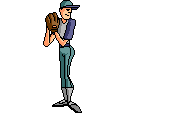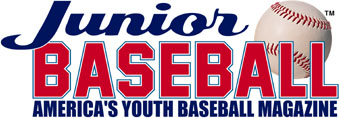News and Announcements
Baseball’s Believe It or Not: Champions at Last
Posted by Patrick Piteo at Oct 31, 2002 4:00PM PST
( 0 Comments
)
After 41 seasons the Angels found themselves 41 games out of first place. Their 42nd season brought them within four games of first place, yet the Angels franchise managed to capture their first World Championship. No expansion team had waited longer to claim their first Series triumph. The title run was the team's fourth trip to the playoffs, where they were ousted in the ALCS in 1979, 1982, & 1986. After beginning play as the Los Angeles Angels in 1961, the team moved to Anaheim and became known as the California Angels in 1966. The Angels christened Anaheim Stadium on April 9, 1966 with an exhibition game against the San Francisco Giants and Willie Mays hit the ballpark's first home run. Fast forward to 2002 and the franchise had changed ownership (from Gene Autry to Disney), stadium name and capacity (renamed Edison Field in 1998 with 64,593 seats downsized to 45,050), and came to be known as the Anaheim Angles. After rebounding from a franchise-worst 6-14 start, the Angels became only the fourth team ever, and first since 1912, to win the World Series without any players on their roster with World Series experience. And just as they had in the past, San Francisco become the footnote to another milestone in Angels franchise history. After all, it was just two years earlier that the "Rally Monkey" had been born during a summer interleague meeting between the two teams. Now the monkey rests solely on the back of the Texas Rangers, who entered the American League 42 years ago with the Angels and have yet to win a championship. The Rangers franchise actually began as the second incarceration of the Washington Senators (1961-71) before baseball left our nation's capital for good. The home of baseball's longest 0-for-franchise drought now resides exclusively in Arlington, Texas.

What I've Learned From Baseball by Coach John Peter
Posted by Patrick Piteo at Oct 31, 2002 4:00PM PST
( 0 Comments
)
The game of baseball is infinitely more complex than most give it credit for. Most that I have learned about baseball is common sense…but each lesson took someone with more common sense than I to point it out. This week's thoughts are based on the great team-style of play of the 2002 World Champion Anaheim Angels and their great coaching staff. For Hitters The batting average is the 'Satan' of hitters! Why?…because you cannot control getting a hit. You can only control hitting the ball somewhere hard…and the more hard hit balls, the higher your batting average will be at the end of the season…and that's when you should look at your numbers! I learned this from Steve Springer, author of one of my favorite tools; an audio CD called Quality at Bats...the mental side of hitting! For Pitchers You can't live forever nibbling on the corners. Pitching aggressively is the ultimate sign of a pitcher with potential and/or one who will experience continual success (and sometimes Barry Bonds takes you downtown too). For Coaches Develop and play for the big inning. Why… because in 65 percent of all wins, the winning team scores more in one inning than the losing team scores during the entire game! You just can't count on scoring in every inning....see game 6 when the Angels were down by 5 runs and trailing the series by 3 games to 2!


Read This Great Artilce On Pitching.. Its Not Only The Innings , But How Many Pitches The Pitcher Throws... At one time or another, a pitcher can have a tired or stale arm. This can happen on the youth level just as it happens on the professional level. In youth baseball, pitchers are even more susceptible, especially during All-Star time if pitching rules are relaxed and pitchers are able to pitch more innings. There are a number of things a manager and parents can do during the season so as to not burn out, or even possibly injure, a pitcher’s arm. Loosening up is very important before a pitcher throws one pitch. The expression "warm up to pitch, don't pitch to warm up" is very relevant. For example, if you have ever noticed the great relief pitcher for the New York Yankees, Mariano Rivera. When he is called on to pitch, he goes through a stretching and loosening up routine for five or ten minutes before he even picks up a ball. During the regular season, managers, coaches and even parents should pay more attention to a player’s pitch count rather than the number of innings pitched. Every player is different, but the manager should use some sought of guideline to determine how many pitches are enough for a particular player. A few years ago the American Sports Medicine Institute did a study sending surveys to orthopedic surgeons and coaches around the country. They recommended for 11-12 year-old pitchers a maximum of 68 pitches with two days recovery. This might seem very conservative. The study also stated that conditioning of the arm and entire body can reduce injury. Another issue facing the youth baseball pitcher is dual leagues, or playing for his school and an outside league. It is always a good idea for the manager to make contact with the school coach. Let him know that you understand that the school team is the priority and that you want to be aware of how much the player is pitching. Responsible school coaches should be able to give you the amount of innings and pitch count for a player throughout the season. Baseball seasons are increasing in length at the youth league level. All-Star games and the popularity of Fall baseball all add up. There is potential for pitchers to do harm to their arms. Loosening up and stretching are a must. It is up to the manager, coaches and parents to look out for the long-term interest in their player, rather than overpitching him to win one particular game.

Check Out This Great Breakdown On The Barry Bonds HR Swing
Posted by Patrick Piteo at Oct 28, 2002 4:00PM PST
( 0 Comments
)
Check Out This Great Analysis On The Great Barry Bonds Home Run Swing by All-Star And Hitting Guru Tony Gywnn.

Check Out This Great Publication: What is Junior Baseball JUNIOR BASEBALL is "America's Youth Baseball Magazine", the national dedicated publication for youth baseball players, their parents, coaches, and associated organizations, regardless of league, park, or school affiliation. Published by youth baseball participants and enthusiasts, we know the sport and what it means to you! The nation's top high school, college, and even Major League coaches contribute to JUNIOR BASEBALL, so the information you get here is from the experts who know the game best! JUNIOR BASEBALL MAGAZINE is the authority on youth baseball, and is officially endorsed by the National Baseball Hall of Fame, Pony League, Babe Ruth League, British Baseball Federation, Dixie Youth Baseball, Amateur Athletic Union (AAU), American Amateur Baseball Congress (AABC), Continental Amateur Baseball Association (CABA), Dizzy Dean Baseball, National Amateur Baseball Federation (NABF), National Baseball Congress (NBC) 'Hap Dumont', National Association of Police Athletic Leagues (PAL), United States Specialty Sports Association (USSSA), United States Amateur Baseball Association (USABA), and USA Baseball. JUNIOR BASEBALL is an independent publication and is not affiliated with any youth baseball organization, but covers all youth baseball programs including Little League, PONY League, Babe Ruth League, Dixie Youth Baseball, Dizzy Dean Baseball, T-ball, AAU, CABA, AABC, PAL, USABA, USSSA, NABF, high school baseball, parks & recreation programs, YMCA youth sports, American Legion Baseball, and all other youth baseball organizations, divisions, leagues, tournaments, etc., including select baseball, travel teams, and club ball. This website provides a sampling of the excellent editorial found in every issue of JUNIOR BASEBALL MAGAZINE as well as additional information not found in the printed version. You'll also find on this website youth baseball camps and schools, and a youth baseball tournament calendar. Listings are free and may be sent to: editor@juniorbaseball.com or faxed to: 818/710-1877. On our site you'll find the Junior Baseball Store - a great source of baseball books and videos covering all topics of coaching, skills building, pitching, hitting, fielding, running, and more! Also, browse our back issues of JUNIOR BASEBALL MAGAZINE, and pick out some issues with articles of particular interest to you. You can also subscribe to JUNIOR BASEBALL MAGAZINE, and have each big, colorful, exciting issue delivered right to your mailbox! If you're in a baseball-related business, and would like to reach kids, their parents, and coaches involved in youth baseball nationwide, contact us directly for advertising information. Like to share your baseball knowledge or experiences with our readers? We are always looking for good writers to submit articles on a variety of topics and styles. See our Writers' Guidelines for more information. We are always interested in your comments and suggestions. You can contact us in a number of ways, and we encourage you to do so! Our Goal It is JUNIOR BASEBALL MAGAZINE's mission to provide information that enhances the youth baseball experience for the entire family. The player improves his skills and is more successful. The family enjoys the activity more and shares this precious time in their life. JUNIOR BASEBALL emphasizes good sportsmanship, safety, physical fitness and wholesome family values. Whether it's information on pitching, hitting, catching, fielding, base running, or all other aspects of the game of baseball, we strive to present the most accurate information, from the top baseball coaches and experts, in the easiest-to-understand format possible. If it has anything to do with youth baseball, you will find it in JUNIOR BASEBALL MAGAZINE! Reading That's Right on Target for Your Child JUNIOR BASEBALL MAGAZINE targets all youth players ages 7-17, their parents and coaches. However, most articles are geared to the 10-14 year-old experience. There are articles in every issue for parents, a regular tee-ball level column (Rookie Club) for ages 5-8, a column for more experienced players ages 9-13 (All Stars), and a department for high-school age players 14 -18 years-old (Hot Prospects). Many parents of younger children choose articles to read out loud to their kids. In fact, JUNIOR BASEBALL is actually edited on three different reading levels, so there's something here for everyone! The magazine's top quality editorial entertains, challenges and makes reading fun. By improving both their playing and reading skills, JUNIOR BASEBALL helps players prepare for a better future. JUNIOR BASEBALL is used by teachers and librarians nationwide. Special group subscription rates are available for school and municipal libraries. Wise Consumer JUNIOR BASEBALL MAGAZINE helps parents save time and money by reviewing the latest youth baseball equipment (bats, gloves, mitts, pitching machines, training aids, etc.), evaluating performance and value and providing the best sources for training devices, books and videos. Twice a year, informative Buyer's Guides are published. Families turn to JUNIOR BASEBALL MAGAZINE to help them make many of their buying decisions. There's Much More You're Missing! The articles on this website are just a sampling of the many popular features, in-depth skills clinics, columns and departments as well as sweepstakes and give-away promotions that will only be found in the exciting, full-color, printed magazine version of JUNIOR BASEBALL! Published bi-monthly, JUNIOR BASEBALL MAGAZINE is available by subscription and on select newsstands, independent locations, and leading bookstores nationwide. Subscription phone lines are open M-F, 9AM-5PM, Pacific Standard Time. Recorded messages and orders can be left 24 hours a day. Discounted group subscription rates are now available for leagues, coach training and certification programs, and associations. Please call or email for details. A portion of your subscription dollars helps make this website service available free of charge to all youth baseball participants.

